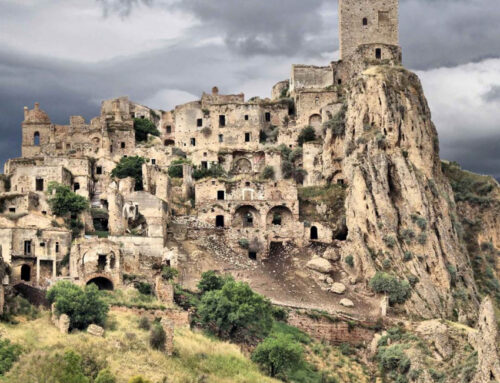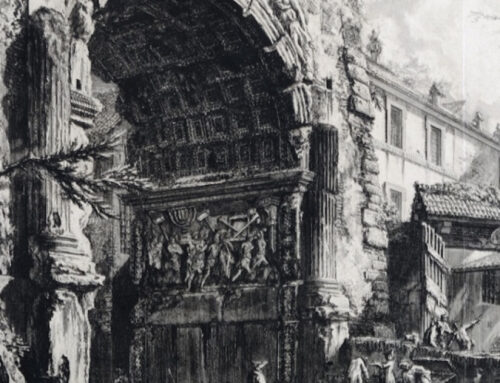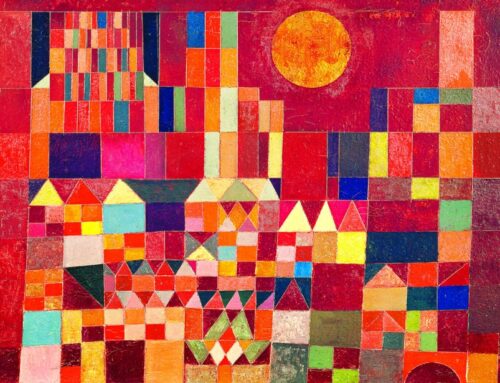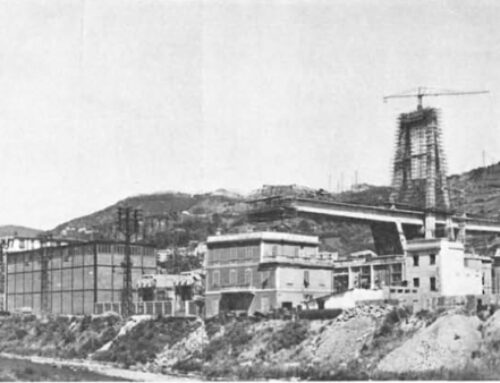There are certain concepts that are taking on considerable importance in the social field, usually without our knowledge and more gradually than suddenly, whereas previously they were confined to a well-defined area of knowledge. Landscape is one of these concepts, comparable in this respect to ethics, whose transdisciplinary use is in full development, and which, after having been above all one of the high points of classical geography, has become a kind of paradigm illustrated by numerous disciplines in the natural sciences and the humanities.
From domestication to landscape simulation
There are certain concepts that are taking on considerable importance in the social field, usually without our knowledge and more gradually than suddenly, whereas previously they were confined to a well-defined area of knowledge. Landscape is one of these notions, comparable in this respect to ethics, whose transdisciplinary use is in full development, and which, after having been above all one of the highlights of classical geography, has become a kind of paradigm illustrated by numerous disciplines in the natural sciences and the humanities. Despite its omnipresence, landscape is nonetheless extremely difficult to define, and we find ourselves confronted with it in the same way that Saint-Augustin confronted time: when people don’t ask me what time is, I know, but when they do, I don’t know any more. The proliferation of works on landscape does nothing to change this, and even if each of them provides a wealth of information that is often remarkable, we are left with the feeling of an asymptotic journey that leaves a trace of despair in the mind and gives rise to a short question that is also fraught with dissatisfaction: what next? This question, not formulated so abruptly, is perhaps one of those that gave rise to the proposed theme of the ‘meaning’ of landscape. If we assume that the word was conceived with reference to the meaning that had to be given to the landscape, we might also be inclined to think that it was chosen because of its rich polysemy, which also expresses sensation, sensuality and direction. In terms of language alone, the expression “sense of landscape” offers multiple different and complementary approaches.
It may therefore be a question of landscape as a historical object to whose reality the human sciences are trying to attribute meaning, without forgetting to take account of natural necessity alongside the notion of freedom specific to the actors who, starting from a given, have created a new object that is as much physical as it is metaphysical. It is precisely because of this dual relationship between necessity and freedom that landscape poses an essentially epistemological problem from a theoretical point of view. But the landscape can also be conceived as a source of sensation and sensuality, which it is when novelists and poets seize upon it to reconstruct it from a solipsistic point of view. Finally, we can ask what the landscape is becoming or can become as a dynamic phenomenon, and then we can ask what ‘direction’ it can take or is simply taking.
I believe that all these meanings make sense, even if they were not all envisaged by the initiators of the symposium to allow the landscape to be treated in its double envelope of necessity and freedom. As I said, it’s not easy to define landscape, but it’s fair to ask whether it’s appropriate to give a definition that can only be the crystallisation of an object that is always in the process of crystallisation. There would be a contradiction – and there is a contradiction – in crystallising into a definition what is essentially movement. In these conditions, the only way of approaching the object is to try to construct a process that takes account of it without freezing it in a definition that is always suspect of “fixism”. As the product of the interaction of organic and inorganic elements, the landscape is part of a process of continuous transformation and, if we disregard the role of man and his cultures, in this case the development of the natural landscape has no meaning other than that of a result constantly taken up and remodelled by the interplay of the living on the non-living. It is a form of the diversity produced by the chain of relationships established between the biotope and the biocenosis to create an ecosystem in dynamic equilibrium. It is on this produced diversity that man has projected his work – energy and information – to satisfy his needs given the resources available in his culture. For a long time, the humanised landscape was nothing more than the result of a process of domesticating the diversity on offer, but not to produce landscape, which is merely a by-product, but to satisfy needs. It was only much later that the landscape was conceived for its own sake, not as an end in itself but to satisfy, among other things, aesthetic aspirations that had moved to the top of the pyramid of needs and were more or less satisfied.
Landscape is an adventure, the adventure of diversity given, offered, the diversity of the body of the earth that human beings must learn to know, but also the diversity produced by the natural elements on the human body and the diversity produced by the social body on the body of the earth and on the human body. Long before the pre-Socratics, the great Mesopotamian, Egyptian, Hebrew and Greek myths narrated the diversity of the world. Narration preceded the description of diversity, which is at the origin of scientific knowledge. Scientific knowledge gradually freed itself from anthropomorphic or non-anthropomorphic personifications to enter the system of elements, principles and concepts: “What science repeats, myth had already suggested…”. (Hans Blumenberg, 1979, p. 45). But we never stop leaving myth to enter science, we are always on that strange frontier that makes myth and science communicate, we never stop transgressing this limit through metaphor, to move from one difference to another, to use or compose systems of differences. Is diversity not, in the final analysis, a coherent and relevant system of differences, either given when it is given by the interplay of natural forces, or produced when it is the result of the intentional interplay of human action on geo-diversity and bio-diversity?
Cosmogonies are coherent and relevant systems of differences: Genesis confronts us with the diversity given to us, but also with the diversity produced by the transgression of the ban. Left to his own devices, fallen man, who has tasted knowledge, will produce diversity. Henceforth, the body of the earth, the body of man and the social body will be given over to production, in other words, to a vast undertaking to shape, or even remodel, what was shared at ‘origin’. Origin? A naïve but indispensable word, even if it is impossible to say anything about it in time and space. When I say ‘impossible’, I mean that a lot has been said, an enormous amount has been said, but without ever fixing the time and place of this origin, which is constantly changing, moving and being called into question! This is the work of philosophy, science and the sciences. We have produced everything from the seed of myths that we have manipulated, transformed and domesticated. Between Genesis and the big bang theory, there is obviously all the ‘thickness’ of science, but the latter, like the former, is destined to become another myth, and so on… Apart from the way they are formulated, the questions are always the same, but the answers are innumerable: the history of thought is no more than a gigantic graveyard of answers … in which there is always enough life left to revive the original question. Sometimes answers even resurrect themselves, as shown by the Gaia hypothesis (Lovelock, 1979). While the questions are structural invariants that endure over time, the answers that are given to them are morphologies whose variability is great, if not infinite.
People face the world as if they were looking at pieces of a gigantic jigsaw puzzle that they have to put together, although there are many possible images and not just one that has to be found. The assembly is not singular but plural. Every human culture contains at least one assemblage project, and by that very fact it creates diversity in relation to all the others. Every culture is a coherent and relevant system of differences insofar as it highlights, and therefore exalts, certain elements or parts to the detriment of others that it leaves aside, and therefore discards. A culture simultaneously creates memory and oblivion: it actualises and potentialises. Societies create diversity through the work they project onto the earth’s body, the human body and the social body.
Producing diversity therefore means producing differences that are conditioned, if not determined, by the energy and information available to a human group at a given time and in a given place. Geo-diversity – the forms of the earth -, bio-diversity – the forms of life – and socio-diversity – the social forms – constitute the ‘matter’ on which the processes of culture are constantly at work. I will mention two processes that are still at work, but under markedly different conditions: domestication and simulation. All human action resorts simultaneously to domestication and simulation, but in different proportions. If we go back to Moscovici’s categories (Moscovici, 1968), i.e. the organic, mechanical and synthetic or cybernetic states of nature, which describe man’s relationship with nature in a general but nonetheless usable way, we find that the relative share of domestication tends to diminish in favour of simulation as we move from one state of nature to another. To extend the metaphor of the jigsaw puzzle, we can say that every state of nature is a different reordering of the ‘pieces’, providing, in each case, a different image of the world and its diversity, in the elaboration of which domestication and simulation are mobilised in different ways.
The domestication process
The common idea that immediately springs to mind when we speak of domestication is that of taming, subjugation and enslavement. To apply the term to living organisms and ecosystems is to highlight their submission to and use by man. But to talk in this way of adaptation to human needs does not really explain the process.
Domestication leads to the production of living systems that can no longer do without man, in other words, that disappear when man ceases to care for them: “… domestication can be considered complete when the plant or animal, profoundly transformed by human selection work, can neither protect itself, nor feed itself, nor reproduce without human assistance” (Jacques Barrau, 1990, p. 36). In other words, domesticated organisms or ecosystems are different from what they were before human intervention. If they can no longer survive without human assistance, this means that man has favoured certain characteristics in them and eliminated others that are not useful for his purposes. Through domestication, man produces diversity, either by hypertrophy or by atrophy, which can lead to the disappearance of a given trait.
From a given bio-diversity, it is possible, through work, to draw another picture of living things, another bio-diversity whose interrelationships and morphologies are modified. This process of integrating living things into human history, whose time arrow is irreversible, implies a dependence on human time and consequently a change in the time scale for domesticated species and ecosystems. The original time scale is replaced by a time scale defined by the social uses that humans make of domesticated “objects”. From a given living object, taken out of its own natural time, another object is produced and integrated into the social time of the group that domesticated it. The domesticated object is, in fact, a new object that reflects the mark of the system of intentions framed by the culture of the group. The new bio-diversity produced is adapted to social uses. But when domestication ceases, because uses change, the whole bio-diversity produced is called into question. If the uses fade or disappear, then humans will no longer provide the energy and information necessary for the existence of domesticated objects which, left to their own devices, will simply perish and die. The bio-diversity produced is temporally unstable, since it is the uses to which it is put that define its lifespan.
But time scales are not the only ones involved. The spatial scale has also changed. As resources are limited, the process of domestication also leads to a selection of places in which man invests his efforts, thereby replacing the scale of natural distribution with the scale of uses in space. Geo-diversity is therefore affected, and here again we are witnessing the production of “spaces” by exalting certain places and sidelining others. The location choices revealed by observation in the field are sometimes surprising. Why are two places, even though they are neighbours and apparently similar in terms of their characteristics, clearly preferred to one another? Historical reasons can be given, but then they have to do with culture, which does not always provide an unequivocal answer, other than through a change in usage brought about by a new system of intentions, which may be political or economic in nature, for example. Here again, as with time, geo-diversity is not stable. A diachronic reading of the geo-diversity produced would show, if it were undertaken, that geographical necessity only exists because there is history. Are not a plain, a mountain or a river defined differently over time by the societies that ‘use’ them? From a given geo-diversity, man produces new and different geo-diversities. These are nothing more than images of the original geo-diversity remodelled and reordered. To use a graphic metaphor, we could say that the image of the original geo-diversity is a kind of anamorphosis whose explicit or implicit deformation pattern must be found. These images are caricatures of nature, so they are relevant and coherent systems of differences, but distorted. That said, every model is a caricature, and the diversity produced is a caricature of the diversity given in many respects: “The art of the caricaturist is to capture this sometimes imperceptible movement, and to make it visible to all eyes by enlarging it. … “He creates disproportions and deformations that must have existed in nature at a vague stage, but which were unable to come to fruition because they were repressed by a better force” (Henri Bergson, 1941, p.20). Without realising it, domestication is akin to the art of the caricaturist. Isn’t it basically an implicit and pragmatic theory of caricature applied to nature, to a given diversity, to produce diversity by hypertrophy or atrophy, in other words according to a law of allometric growth?
The production of diversity therefore plays on scales. It starts with a given object on a 1:1 scale, from which it selects characteristics whose scales it changes in relation to the whole. Certain elements are treated on a 1/n scale, where n can be greater than 1 in the case of atrophy or less than 1 in the case of hypertrophy: the domesticated object produced is then, in the full sense of the term, a caricature of the given object. In short, the diversity produced becomes a function of the interplay of scales controlled by cultural choices that emphasise this or that element of the given object as a means of fulfilling a specific use. Cultural choices, which modify the original nature of given objects, are, in this case, comparable to cartographic projections which modify the representation of the geographical object.
Through domestication, man not only modifies bio-diversity and geo-diversity, but also himself, since his relationships take place in a transformed environment. By his actions, man is practising a kind of self-domestication, without knowing it or wanting to, in the course of which he modifies his body and also his thinking. I will not go into this question here, but my aim is simply to show that the process of domestication has multiple effects.
The simulation process
Even though domestication has long predominated in the process of adjusting different physical and social environments to transform them into “living territories”, the other process, that of simulation, has never been absent, since in any operation to create diversity, we can find a more or less clearly formulated project or basic model.
Like domestication, simulation does not start from a 1:1 scale and then play with the object by deforming it, but proceeds from a reduced image of an object to be produced. The scale of the reduced image is 1/n (n being greater than 2). The simulation method is progressive and not regressive like the domestication method. To use Moscovici’s categories of states of nature, we can claim that the role of simulation has only increased from the organic state of nature to the synthetic or cybernetic state of nature, via the mechanical state of nature. The growing role of simulation is positively correlated with that of invention. The limit of the simulation process would be the creation of an entirely man-made world, on a scale of 1:1, alongside the real world! An insane undertaking, reminiscent of Borgès’s apologue (Borgès, 1951, p. 129-130) in which the emperor has the map raised to the scale of the empire! As the logician would be quick to point out, where would we put this “new world” that doubles the given world? In this case, and in this case only, the logical constraint aside, we would have a maximum of diversity, produced from a minimum of given diversity.
Will we then be able to control the diversity produced better than we control the diversity given? This is doubtful. We are all familiar with the Biosphere 2 experiment in the United States, which consisted of having men and women live in a series of ecosystems, created from scratch, designed to ensure sufficient autonomy for human life. Despite the presence of a lot of plant life, we soon realised that there was an oxygen problem. Although the reason for this was identified after the fact, oxygen had to be injected quickly to prevent the ‘inhabitants’ of Biosphere 2 from suffocating.
Vico may well have been right to say that we only know what we make, but this knowledge is nonetheless fragmentary, because the new relationships that are established between the elements produced are largely beyond our grasp, in the sense that their interaction acquires a life of its own, which we must strive to understand. We can therefore see that this desire for man to control the entire process corresponds to a desire to eliminate risk, which is obviously impossible. This desire, which is always incompletely satisfied, rekindles the desire for knowledge. Even with simulation, there is no end to the story; on the contrary, the story relaunches the simulation.
This attempt to eliminate risk propels us towards a utopian situation. The relationship between simulation and utopia is not accidental. Utopia, which refers to a situation that is “perfect”, or at least considered to be so by those who imagine it, is a good illustration of simulation, since it is constructed from elementary characteristics borrowed from real objects, detached from their context, but recombined and reordered to form an entirely new unit. Purely intellectual simulations, utopias from Antiquity to the present day have, with rare abortive exceptions, had no transformative effect on the real world: they have produced virtual diversity whose incorporation into the social imagination has nevertheless left its mark on the collective memory. The history of the ideal city from Hippodamos of Miletus to Le Corbusier is a magnificent introduction to simulation (Vercelloni, 1994).
With the advent of mechanical engineering, synthetic chemistry and the computer, among other things, simulation has become a process of considerable importance in technocratic societies. It is an algorithmic exploration that generates images and models, inventing ‘natures’ whose scales are chosen according to the utility sought. Through simulation, we have produced tens of thousands of materials that did not exist in their natural state and that are the result of complex syntheses, and we have corrected, modified and even invented living things using genetics as a starting point. Genetic engineering is creating a new living world. All this diversity is now part of our environment and in many cases is even responsible for its partial destruction. One thing is certain: it cannot be controlled, because in most cases we are unaware of its effects, which we often only discover a long time later… The consequences for the body of the earth, for the body of man and for the social body are obviously full of promise, but also full of risk.
Step by step, through simulation, man has designed and built ecosystems whose diversity is entirely produced. The city is the most characteristic example of these entirely produced ecosystems. The city occupies a considerable place on the horizon of our daily lives, so considerable that for a growing number of its inhabitants relations with the given diversity are increasingly rare. City dwellers are immersed in a world that shapes them almost entirely: their relationships are conditioned much more by the diversity produced than by the diversity created, the after-effects of which are increasingly discrete.
If we look at the current problems, we have to recognise that the city is escaping both the individuals who live in it and the authorities responsible for managing it. It is not that the city is suddenly endowed with an uncontrollable life of its own, but that the city has become the site of multiple relationships triggered by spheres whose autonomy has reached an extreme degree. Through the interplay of legal and illegal markets, the city is given over to money, the flows of which make and break urban morphologies, modify or destroy the socio-cultural fabric, and in a way transform life.
Contemporary simulations always begin with money games: each time, the aim is to assess the cost of producing a given diversity and, above all, to anticipate the benefits… in monetary terms. It has become commonplace for economists to evaluate ‘natural’ wealth, i.e. all the diversity created, in monetary terms. Everything has a price and everything can have a price, from the inorganic to the organic, from objects to people. In the city, exchange value takes precedence over use value, resulting in unstable relationships over a short period of time.
Whereas domestication still attached great importance to real things, simulation works more on the sign of things, hence the increased role of money. The use of things is no longer regulated by the things themselves, but by the monetary signs that represent them.
The field is now open for the production of diversity that is entirely conditioned by the flow of capital from one part of the planet to another. The speed of circulation and the accumulation of money determine the diversity produced. Nothing is immune to these upheavals: those who possess capital and scientific information are in the process of seizing bio-diversity in the countries of the South, in other words confiscating it at the genetic level and engaging in vast manipulation operations to exploit the diversity that will be the subject of lucrative markets.
Having destroyed much of the diversity created in the past, the North is now discovering its economic importance and is seeking to ensure its availability. At the same time, it is changing the socio-diversity that could stand in the way of its plans. In other words, it is tending to homogenise populations whose differences do not seem relevant to it. In other words, we are in the process of doing with socio-diversity what we did in the past with bio-diversity, which was not deemed compatible with the uses we wanted to promote, hence the disappearance of practices and knowledge rooted in traditional cultures. Who could pretend that we won’t need the contributions of these traditional cultures and that they won’t at some point be useful to the North and, in turn, the ‘object’ of the market?
For a number of years now, our regions have been witnessing attempts to reinvent traditional socio-diversity in order to turn it into a marketable commodity through tourism and leisure activities. Of course, these are just images that have nothing to do with reality. Simulation offers us more and more images and, for want of a better word, forces us to inhabit them and move through them. Potemkin, with its fake villages designed to deceive Catherine II about the true state of Russia, even if the anecdote was apocryphal, could be the ancestor of the operational simulation of socio-diversity produced on a 1:1 scale.
Living in images…
If, through domestication, man has inserted himself into the space-time envelope by substituting his own scales for those of the biosphere, at the same time he has partly destroyed the very foundations of his existence. Human expansion took place in successive ‘clearings’ that were removed from the environment, whose equilibrium was maintained without too much difficulty until the industrial revolution, even if irreversible destruction occurred here and there. The protean exaltation of nature in the 18th century undoubtedly reveals the malaise of Western society, whose models invaded not only our thinking but our very existence. A history of images of nature would be needed to show the extent to which man has lost his bearings: we don’t know what nature is, but it is the object of every discourse, every nostalgia and every preoccupation. It is no coincidence that the notion of landscape, borrowed from painting, became the horizon on which both literary and scientific projects were to take shape. As an image par excellence, the landscape in itself founded a paradigm which, two centuries later, would continue to nourish literary and scientific description, whether in the natural sciences or the humanities. The description of the landscape is not in any way the description of a portion of nature, but something quite different: it is man’s search for his essence through the mediation of exteriority. This search for essence is a legacy of Greek philosophy, which from the time of the pre-Socratics strove to extract the stable essence of things from the vital flux of phenomena, and this, combined with the tendency towards description, ultimately gave considerable impetus to the production of images of nature.
The privilege accorded to essence over existence, to representation over referent, is probably one of the anchor points of the simulation whose development has accelerated with the unprecedented crisis facing the biosphere. Having largely depleted its ‘natural’ heritage, the depths of which it continues to ignore, contemporary man finds himself confronted with the idea of reinventing what he has seriously compromised or even destroyed. But this reinvention is itself uncertain, insofar as the models on which it is based reflect insufficient knowledge of the eco-bio-socio-logical interactions that condition all the cycles in which man intervenes.
The images of nature produced by simulation can only be unstable, and indeed they are. The most typical example of this simulation in action is provided by the work of architects and town planners, who ‘invent’ landscapes that are generally short-lived and whose extension can only be limited for the reasons given above. The almost ex nihilo construction of tourist landscapes is an increasingly frequent illustration of simulation. Models of the exotic are designed on a 1:1 scale and then tested by marketing to ‘hook’ the urban clientele who, on a 1:1 scale, must find the fulfilment of their most secret and wildest dreams. It is no longer nature that is inhabited, but images or, if you prefer, life-size decors that can be modified to suit changing tastes and preferences. There is no longer a stay among things but a journey through things, a journey through scenery, as in the case of the Potemkin villages that moved to the rhythm of Catherine II’s travels to create an illusion.
We urgently need to ask ourselves whether the real crisis of nature does not lie more in the preference we give to its images rather than to nature itself. Wouldn’t Jonas be right when he claims that Homo Faber is in the process of supplanting Homo Sapiens? Even though humans need nature, they act as if they could do without it. On the other hand, they need the idea of nature in the same way that we need a hereafter and a hereafter, and that’s why this idea is indestructible even if the thing is not.
Is the history of our relationship with nature ultimately anything other than the chronicle of an exile, that of ‘given’ nature, which constantly forces us to imagine ‘produced’ natures? These will not be able to fit into the traditional description, since they will be ‘description’, by definition, even before they exist materially. On the other hand, they will be narratives insofar as they will express in ‘epic’ form what has given rise to them. Wouldn’t the modern form of the epic be the chronicle of the inventions of simulation?




